SocietalSystem ( StS )
www.societalsystem.com
Portugal
www.societalsystem.com/fpo/
Painéis
de São Vicente
Polytriptych
of St. Vincent
National Museum of Ancient Art - Lisbon
General
Outline
The
Painéis de Säo Vicente consist of six panels
in oak. Sixty people are depicted on the painting,
belonging to all classes of the 15th century society.
Much literature has been produced about the significance of the
master work.
Controversy exists about the identity of the persons.
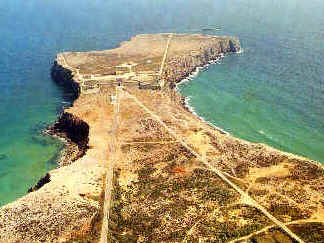

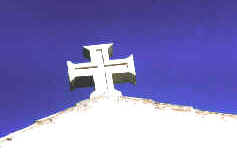
Sagres
Promontorium, Henry the Navigator, Nossa Senhora de Guadalupe in
Vila do Bispo, Algarve.
Vila do Bispo - Algarve - Portugal.
Traditionally, the figure on panel 3, right of the bishop, is
supposed to be Henry the Navigator,
D. Henrique, o
Navegador, the initiator, from Sagres -
Algarve, of the Great Discoveries.
He lived from 1394 to 1460 and was Grandmaster of the Order
of Christ,
which followed the extincted Order of the Templars.
The work is attributed to Nuno
Gonçalves, who created it between 1450 and 1470.
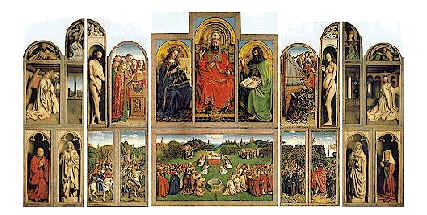
Lam Gods,
altarpiece in Ghent, Flanders, by Jan and Hubert Van Eyck, 1420s.
The painting is inspired by other works, mainly those of Flanders
and Holland.
Nuno Gonçalves has visited these regions before he started
working on the Painéis.
He seems to have met with the authors of the Lam Gods in Ghent,
the brothers Van Eyck.
The polytriptych
was 'lost' for centuries and rediscovered only in 1882,
by Columbano Bordalo Pinheiro, in the former palace of
the
Patriarch - Archbishop of Lisbon, called São Vicente de Fora.
In 1909 the painting were transfered to the Royal Fine Arts
Academy for restoration.
Since the 24th of March 1912 they are put in exhibition
at the Museum of Ancient Art - Museu Nacional de Arte
Antiga,
in the Rua das Janelas Verdes, in Lisbon.

Project
The Painéis de Säo Vicente belong to the world's top
masterpieces of art.
Their value however, superseeds their conventional cultural and
historic significance and function
for the world and for Portugal in particular.
The painting dates from the start period of the Discoveries, one
of the main dates in human history.
During the same period the whole world underwent a fundamental
transformation
in many other fields, not at least by the invention of printing
in 1453.
The rediscovery, restoration and exposure of the Panels coincides
with the
end of the monarchy in Portugal, a new phase in its evolution.
Art works of the level of the Painéis de Säo Vicente are not
mere objects of culture and tourism,
they express underlying realities of societal and spiritual
development.
They cannot be part of a collection of major paintings,
however nicely displayed room after room.
Similar would be putting all fountains of a city in one
exposition, taking them away from their squares,
street corners and parks..
Therefore a special venue should be created, in
an appropriate location in Lisbon,
where the vibration of the Panels can flow freely, as a
metaphysical source of inspiration ...
between other historic features of Portugal.
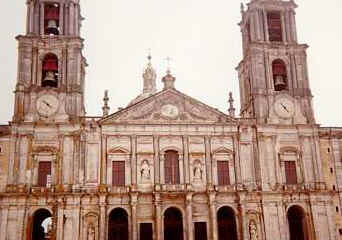
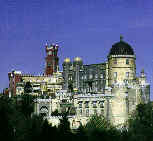

Historic
landmarks of the Lisbon - Estremadura region of Portugal.
Mafra, Palacio da Pena, Ponte 25 de Abril, Cristo Rei.
Receive
an Update Notice of this Page by E-mail
Go to
www.changedetection.com, subscribe (free) and
indicate the url
of the present page: http://www.societalsystem.com/fpo/paineis/paineis.htm
The robot will automatically send you an e-mail whenever this
page has been changed.
contact@societalsystem.com
URL: www.societalsystem.com/fpo/paineis/paineis.htm
Update: 26.11.2012
© SocietalSystem ( StS ) All Rights Reserved